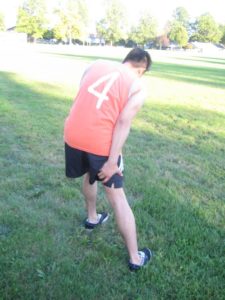Upper thigh pain might be an indication of a muscle strain. Many find it frustrating to have a running session cut short by upper thigh pain. The thighs include some of the biggest muscle groups in the body and vital in achieving a good running form.
If upper thigh pain occurs, it might involve several muscles. There are 3 primary muscle groups in the thigh:
- Quadriceps – front part of the thigh
- Hamstrings – rear part of the thigh
- Adductor muscles – travel down the interior part of the leg
A strain can occur in one of the several muscle groups in the hip while running and this results to discomfort in the thighs. In such cases, the hip flexor muscles positioned at the top of the thigh are a usual site of strain among runners.

Close look on muscle strains
Strains are considered as common injuries among athletes including runners. When a muscle is strained, it is vital to stop activity and allow the muscles to heal. Remember that a strained muscle is susceptible to re-injury.
If the upper thigh pain does not settle after a few days of rest, it might be an indication of a muscle tear which is uncommon and serious than a strain. If this injury occurs at the top part of the thigh, there is bulging or bruising that radiates to the interior of the thigh.
How to deal with upper thigh pain
If an individual ends up with a muscle strain, getting enough rest is recommended. The individual should take a break from his/her normal running routine and avoid engaging in any activity that can worsen the pain.
Apply an ice pack covered with a clean towel or cloth for 20 minutes every 3-4 hours for several days. In case the pain persists longer than a few days, a doctor should be consulted due to the possibility of a severe tear.
In severe cases, crutches should be used to fully relieve the affected muscles and promote faster healing. When the body has a chance to recuperate, the individual can continue with running.
